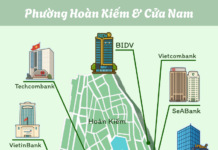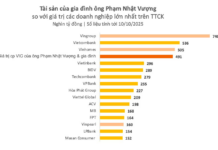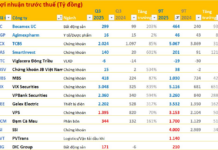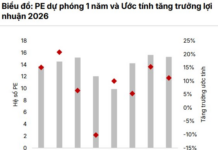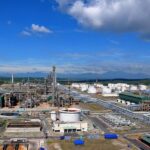
Deputy Prime Minister Tran Hong Ha directed that, although it is a detailed plan, it should not be a rigid one. It must ensure comprehensiveness and foresight to serve as a foundation for the regional land and water port planning.
|
The announcement clarified that the Detailed Planning for Port Groups is a specialized technical plan under the Law on Planning, which specifies the Master Plan for the Development of Vietnam’s Seaport System for the period of 2021 – 2030, with a vision towards 2050.
To ensure quality and a solid basis for approval, Deputy Prime Minister Tran Hong Ha instructed the Ministry of Transport and the Government Office to thoroughly review the procedures, processes, and authorities involved in the formulation, appraisal, and approval of the Detailed Planning for Port Groups, ensuring compliance with relevant laws on planning, maritime, and transportation.
The Ministry of Transport, as the planning agency, and the consulting units are responsible for the accuracy of information and data in the Detailed Planning for Port Groups. They are also accountable for the accuracy of forecasts and consistency between this planning and related plans, including the National Master Plan for 2021-2030, with a vision towards 2050; the Master Plan for the Development of Vietnam’s Seaport System for 2021-2030, and other national, regional, and provincial plans. The principle of lower-level planning adhering to higher-level planning must be followed.
Newly added port berths and areas must be evaluated for a mutually beneficial outcome.
Deputy Prime Minister Tran Hong Ha emphasized that the content of the Detailed Planning for Port Groups should ensure the principles and perspectives of synchronized and unified planning based on scientific criteria. It should consider dynamic and open planning, anticipating solutions for emerging issues. The Ministry of Transport and the planning agency should regularly monitor and evaluate, promptly reporting to the competent authority when unexpected changes occur.
The newly added port berths and areas must be assessed from the perspective of goals, vision, and overall effectiveness, aiming for a mutually beneficial outcome. The evaluation should consider the relationship and impact of new port berths on large-scale strategic projects. Particular attention must be given to Port Group 4, which includes the lower and upper Cai Mep port berths in the Cai Mep – Thi Vai area and the Can Gio International Transit Port. These require thorough and comprehensive consideration and calculation of related issues.
While emphasizing the need for a detailed plan, Deputy Prime Minister Tran Hong Ha stated that it should not be rigid. It must ensure comprehensiveness and foresight to serve as a foundation for regional land and water port planning. The planning should attract infrastructure investment (port berths) and encourage the participation of powerful investors (shipping companies and enterprises).
It is necessary to study mechanisms and policies for port infrastructure development and effective planning implementation. This includes considering state investment in key port berths that are essential for state ownership and management. Clear distinctions should be made between the responsibilities of the state and investors in port infrastructure and port operation-related infrastructure investments.
Unlocking Energy Sector Potential: Clearing Hurdles for Flagship Programs and Projects
Vice Prime Minister Tran Hong Ha has urged relevant ministries, sectors, and local authorities to focus on resolving bottlenecks and accelerating the progress of key programs and projects in the energy sector. The emphasis is on expediting processes and finding solutions to any obstacles hindering the sector’s growth and development.
Unlocking Investment Potential: Deputy Prime Minister Demands Clear Timeline for Public Investment Capital Disbursement
Deputy Prime Minister Tran Hong Ha has instructed ministries, sectors, and localities to report on the review and classification of public investment projects. This includes ongoing projects with clear progress commitments and projects that cannot be implemented due to mechanism, policy, and legal obstacles.
“The Ultimate Guide to the Saigon Gateway International Transit Port Project: A Comprehensive Review”
“The design of the Saigon Gateway International Transhipment Port must be holistic, comprehensive, and detailed for the seven investment phases. It should delineate the designated areas for functional zones and address the port’s relationship with other port clusters, shared infrastructure, connectivity, and human resource development, among other aspects,” said Deputy Prime Minister Tran Hong Ha.
Scrutinizing 154 Solar Projects: The Ministry of Public Security’s Comprehensive Review
Vice Prime Minister Tran Hong Ha has requested that the Ministry of Public Security thoroughly review the list of 154 solar power projects provided by the Government Inspectorate. The deadline for this review is August 30, 2024, and the findings are to be reported directly to the Prime Minister.









